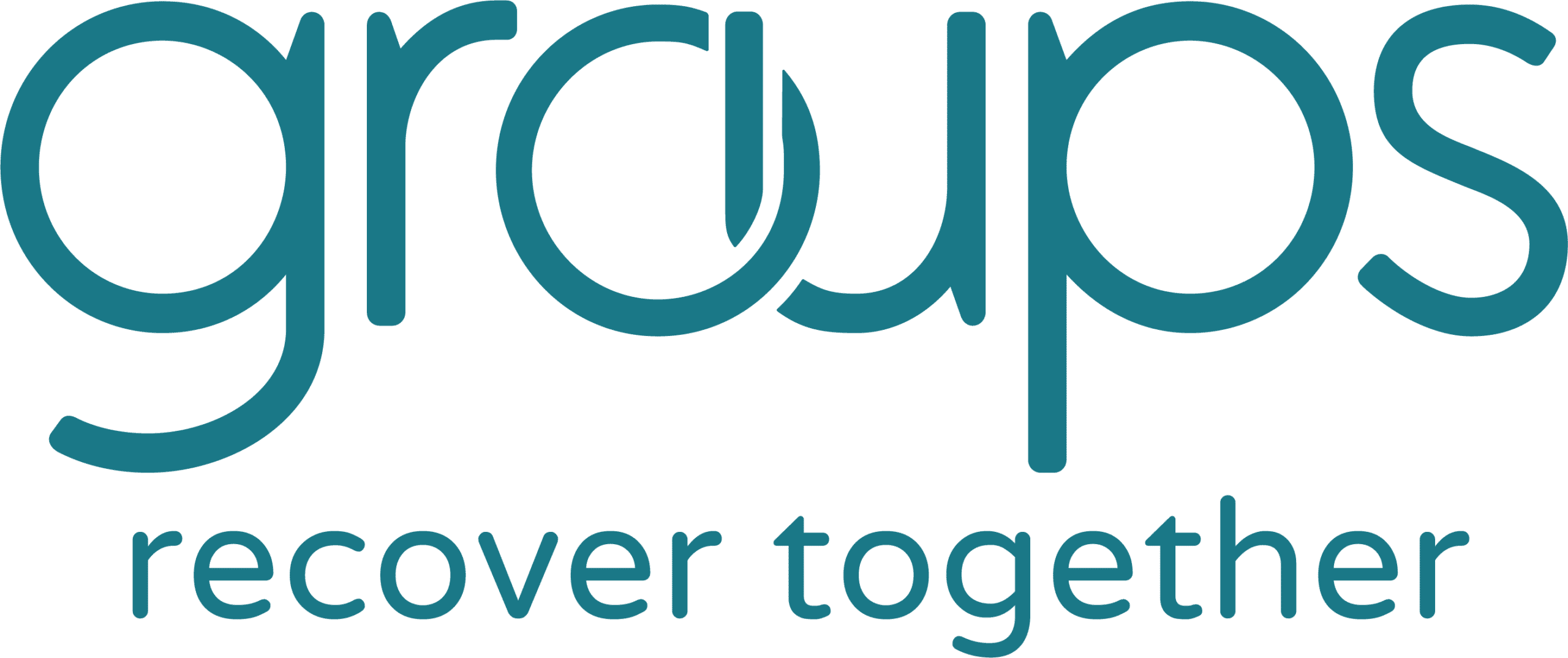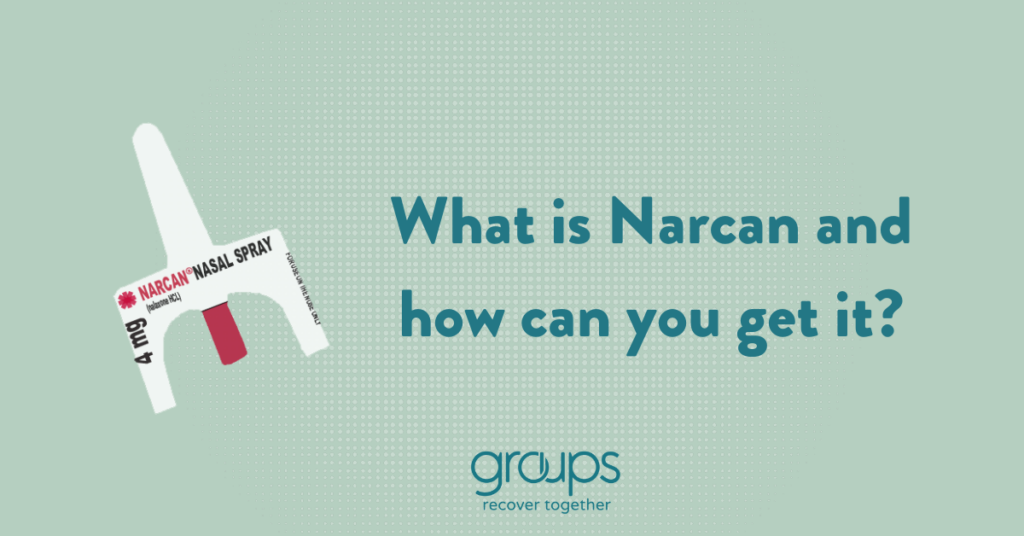How to spot signs of a possible opioid overdose, use Narcan, and get it for free.
Narcan is one of the best tools we have for preventing opioid overdoses. If you or a loved one is at risk of opioid overdose, keeping Narcan on hand can save someone’s life.
Here’s what you need to know about spotting signs of overdose, using Narcan to reverse an overdose, and getting it for free near you. (Groups is one of those resources!)
What is Narcan?
Narcan is the brand name of a medicine called naloxone. Narcan can temporarily reverse the effects of opioid overdoses.
Narcan works to reverse the effects of overdoses caused by:
- Buprenorphine* (one of the medicines in Suboxone)
- Codeine
- Fentanyl
- Heroin
- Hydrocodone (Vicodin)
- Hydromorphone
- Methadone*
- Morphine
- Oxycodone (OxyContin)
*When taken as prescribed, medications for opioid use disorder (MOUD) decrease the risk of overdose.
How does Narcan work?
Narcan works by blocking opioids’ effects. In 2-3 minutes, it can help someone whose breathing has slowed or stopped due to an overdose of opioids.
Narcan is safe and very effective. It’s safe even if the person isn’t overdosing on opioids. However, the medicine won’t work if the overdose wasn’t caused by opioids.
How do you use Narcan?
Follow these steps to give someone you think is having an opioid overdose Narcan:
- Try to stimulate the person by yelling, rubbing their chest bone or upper lip with your knuckles, or pinching their arm. Say you’re going to call 911 and give them Narcan. If they’re conscious and okay, they’ll let you know.
- If they wake up or respond, check their breathing. Keep them awake and alert. If they have breath shortness or chest tightness, call 911.
- If they don’t respond, call 911 or tell someone else to call 911. You can say someone’s breathing has stopped or they’re not responding. Tell them exactly where you are.
- Give the person rescue breathing. First, make sure nothing’s inside of their mouth. Tilt their head back and pinch their nose. Use your mouth to breathe into theirs every 5 seconds for 30 seconds.
- If you need to walk away at any point, put the person on their side with one knee bent and their face to the side.
- Tell the person you’re going to give them Narcan. Carefully remove the Narcan’s packaging. Hold the spray with your thumb placed on the plunger located at the bottom. Tilt the head back of the person you’re giving Narcan. Insert the tip of the spray into either nostril until your fingers touch their nose. Press the plunger firmly to release the entire dose.
- Wait 2-3 minutes for signs of breathing or response. Try to keep them awake and breathing. Lie them on their side to help them avoid choking.
- If they don’t breathe or respond, give them more rescue breaths. If they continue not to respond, switch giving extra doses in either nostril until help comes.
- When the person wakes up, let them know what happened and that you gave them Narcan. Stay with them until help comes. Keep them relaxed and tell them they’re okay.
- When help comes, tell them (or have someone else tell them) what drugs may have been used and that Narcan was given.
Watch this training developed by the National Harm Reduction Coalition
[Embed video or link out] https://www.youtube.com/watch?v=bUtYpbdUSus
Do you need training to use Narcan?
Many organizations offer free Narcan training. Some groups may require you to go through training to get free Narcan. However, you don’t have to be trained to use Narcan.
What are possible signs of an opioid overdose?
Knowing the signs of opioid overdose is important. When you notice the following signs, using Narcan can help save a life:
- Blue or gray skin
- Pupils that look as small as a pinpoint
- Falling asleep
- Loss of consciousness
- Limp body
- Slow and shallow breathing
- Making choking or gurgling sounds
What are the side effects of Narcan?
Sometimes, people who receive Narcan may have withdrawal symptoms. The following side effects are not cause for concern:
- Fever
- Nausea
- Feeling restless
- Feeling irritable
- Fast heart rate
- Sweating
- Vomiting
- Shaking
Should you carry Narcan?
Carrying Narcan saves lives. It’s a good idea to carry Narcan if you or the people around you are at risk for opioid overdose. People who have increased risk of overdose include:
- Those who take high-dose opioid medications (greater than or equal to 50 morphine milligrams per day).
- Those who use opioids and benzodiazepines (like Xanax, Ativan, or Klonopin) together.
- Those who use non-prescribed opioids like heroin or fentanyl.
Although you can’t give yourself Narcan, let the people around you know you have it. They can give it to you if you experience an opioid overdose.
Unfortunately, people who use drugs face a lot of stigma. But it’s no different from carrying an EpiPen to help with allergic reactions.
How can you get Narcan?
Most Groups members can get free Narcan with their Suboxone prescription. Talk to your care team if you need help accessing it. You can also find resources in your state through NEXT Distro or the National Harm Reduction Coalition’s Naloxone Finder.
Narcan is also available for purchase at many pharmacies.
Bottom line: Narcan is a life-saving tool that can help prevent opioid overdoses. It’s important to have Narcan on hand if you or a loved one is at risk of overdose.




